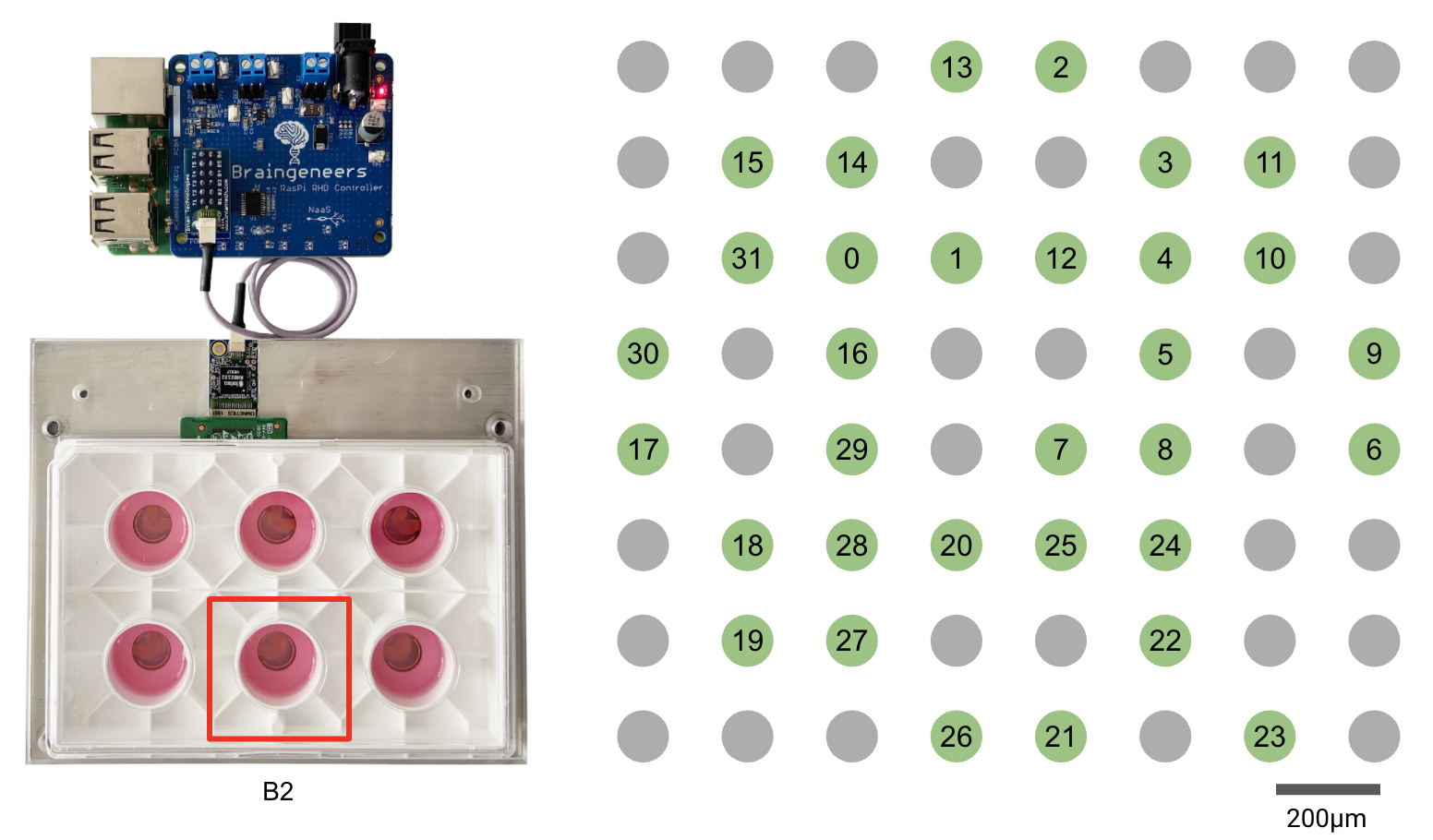Update: The latest manuscript about Piphys has been published in IOP Journal of Neural Engineering!
Peer-reviewed journal article:
The original preprint can still be accessed on bioRxiv.
Piphys is an inexpensive open source neurophysiological recording platform based on Raspberry Pi. It is easily accessed and controlled via a standard web interface through Internet of Things (IoT) protocols.
Piphys modules can be used in a fleet to enable long-term observations of neural development, organization, and activity at scale.
- Raspberry Pi expansion circuit board for and Intan RHD2000 bioamplifier chip.
- Electrode adapter circuit board for Axion CytoView MEA Plate.
Source files, documentation, and files for manufacturing each circuit board are in ./Hardware.
There are 64 electrodes in a well B2 of the Axion CytoView MEA Plate. The electrode adapter circuit board allows 32 of the 64 electrodes to be recorded by Piphys. The green dots are the recorded channels, labeled with their channel number in the data file sampling sequence.
CAD files in for the electrode plate holder are in ./Mechanical/AxionPlateHolder.
Assembly Order:
AxionPlateHolder_CNC_ClampTop_Aluminum
---------------------------------------
[Axion CytoView MEA Plate]
---------------------------------------
AxionPlateHolder_CNC_ClampBottom_Plastic
AxionPlateHolder_CNC_ClampBottom_Aluminum
Software to enable voltage sampling and user interaction, with accopmanying documentation are in ./Software.
See braingeneerpy Python package for IoT communication library.
System validation data with sine wave are available at the Piphys Google Drive folder.
© 2021 Braingeneers
